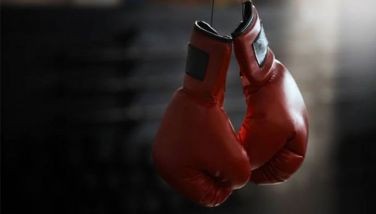‘Belenismo sa Tarlac’

The Christmas spirit is alive and well in Tarlac where Gov. Victor Yap, the Tarlac Heritage Foundation, the Commission for the Cultural Heritage of the Church and the Tarlac Convention and Visitors Bureau locked arms to launch a project that has established the province as the Belen capital of the country.
The art of Belen-making is being revived in a big way in Tarlac with Mrs. Isabel Cojuangco Suntay at the forefront of the effort through the Tarlac Heritage Foundation. Others involved in the project – called “Belenismo sa Tarlac” – are Gov. Yap, Fr. Alex Bautista and Jun Baron. The project is highlighted by a province-wide competition which aims to showcase the artistic, social and religious significance of the Belen, the symbol of Christ’s birth.
A month ago, the Sangguniang Panlalawigan of Tarlac passed an ordinance declaring December as “Belenismo” month and promulgating the promotion of Belen-making as a major cottage industry. The ordinance was authored by provincial board members Carlito David, Amado Go and Pearl Pacada.
Today, as you drive around Tarlac, you’ll see beautiful portrayals of the Baby Jesus in a manger with St. Joseph and the Blessed Virgin Mary. Nearly all the towns in the province submitted entries with municipal buildings showing the way.
Along MacArthur Highway in barangay Salapungan, Tarlac City, you’ll find on the roadside a beautiful, brightly-lit Belen with figures made of resin in the manger. There’s even music playing at night. The attraction has brought thousands of visitors to view the Belen across the road on the lot of a neighboring gasoline station. The lights turn on at 5:30 p.m. so the audience begins to gather after sundown. Barangay captain Joel Alimurung said the display has become a favorite destination of promenaders and tourists.
The display was put up by the Philippine National Police (PNP) with provincial senior superintendent and former PNP spokesman Nicanor Bartolome in charge. The details are so vivid. You’ll marvel at the exquisite manner by which the scene was constructed with tasteful simplicity.
There are other displays you can see along the highway. The Belen in front of the Capas municipal building is another attraction with surrounding bright lights.
* * *
In the Philippines, homes are typically adorned by a Belen and Christmas tree during the holidays. Gifts are placed under the tree while the Belen is in a special spot to pay prayerful homage to Baby Jesus and the Holy Family. When I was a kid, my parents used to take me to view the giant Belens at the Pepsi-Cola plant on Aurora Boulevard, the COD store in Cubao and several homes in the metropolis, particularly one on a side street near the Lourdes Hospital.
It was such a thrill to see the Belens even if the figures on display weren’t moving. In my mind, I would recreate the events that led to the Nativity, the coming of the Magi, the gathering of the shepherds. The significance of it all was that Jesus was born to save mankind, that He gave us hope to be with Him in heaven after life on earth.
In the recent past, the commercialization of Christmas has unfortunately led to more emphasis on the Christmas tree – with its material trappings – than the Belen. Not that the Christmas tree should be downgraded or ignored. Christmas is a time for family, for giving and for forgiving and to many, the Christmas tree symbolizes all of that. But the Belen represents a deeper meaning of Christmas as a season of peace, goodwill, faith, hope, charity and love.
Tarlac’s campaign to revive the art of Belen-making and rekindle the importance of the Belen is timely. In a world that is beset by hatred and greed, we all could use the inspiring symbol of the Belen to remind us of the Christmas spirit not only during the season but also throughout the year.
This afternoon, the awarding of prizes for the best Belens in four categories will be held at the Tarlac Capitol starting at 4 p.m.
The four categories are personal (or individual) where the size must be transportable to the judging site, establishment where the limit in size is three meters and the location is visible to the public (rooftop, lobby or garden), municipal where the size is at least three meters and the location is in front of the municipal building or plaza, elevated and well-lit and diorama where the exhibit is the closed-type with a length of 120 cm, depth of 80 cm and height of 80 cm and the images are six to eight inches tall. Municipal and establishment displays must also exhibit a prayer in written form.
In all, 79 entries were submitted – 12 personal, 10 diorama, 43 establishment and 14 municipal.
The criteria of judging are lighting effects (20 percent), creativity (50 percent) and originality (30 percent) for the personal, municipal and establishment categories. For diorama, the criteria are lighting effects (20 percent), details and realism (50 percent) and artistic merit (30 percent). There are cash prizes for the top three placers in each category with P25,000 for first in diorama, P20,000 each for first in establishment and municipal and P10,000 for first in personal.
I realize the topic of today’s column isn’t on sports but I hope you allow this exception because of the significance of the “Belenismo Sa Tarlac.”
- Latest
- Trending






























